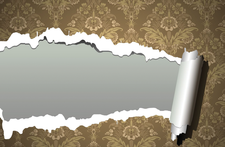Customizing KDE's Plasma desktop
Beyond Wallpaper

© Lead Image © sergwsq, 123RF.com
The KDE Plasma desktop has so many configuration options, it scares some users away. But if you're patient enough to learn the secrets, you'll find some useful tricks for customizing the Plasma user environment.
Some desktop environments are little more than launchers for applications. By contrast, KDE Plasma takes the perspective that customizing the desktop can reduce the number of mouse clicks and make resources easier to find. The result is a desktop on which almost everything can be customized, but new users might have trouble deciding where to start. In fact, many users never get beyond the basics. Once they have right-clicked on the desktop and selected a wallpaper from Default Desktops (Figure 1), they are satisfied. The more adventurous might select System Settings | Workspace Appearance to select a theme or add icons to the Desktop directory within the Dolphin file manager, but, based on their experience with other desktops, many users see little need for anything more.
However, the Desktop and Workspace Appearance settings are only the most basic possibilities. Clicking the desktop toolkit – a rectangle on one side of the desktop, or a semi-circle in a corner – holds the key to many more options (Figure 2).
[...]
Buy this article as PDF
(incl. VAT)
Buy Linux Magazine
Subscribe to our Linux Newsletters
Find Linux and Open Source Jobs
Subscribe to our ADMIN Newsletters
Support Our Work
Linux Magazine content is made possible with support from readers like you. Please consider contributing when you’ve found an article to be beneficial.

News
-
Zorin OS 18 Hits over a Million Downloads
If you doubt Linux isn't gaining popularity, you only have to look at Zorin OS's download numbers.
-
TUXEDO Computers Scraps Snapdragon X1E-Based Laptop
Due to issues with a Snapdragon CPU, TUXEDO Computers has cancelled its plans to release a laptop based on this elite hardware.
-
Debian Unleashes Debian Libre Live
Debian Libre Live keeps your machine free of proprietary software.
-
Valve Announces Pending Release of Steam Machine
Shout it to the heavens: Steam Machine, powered by Linux, is set to arrive in 2026.
-
Happy Birthday, ADMIN Magazine!
ADMIN is celebrating its 15th anniversary with issue #90.
-
Another Linux Malware Discovered
Russian hackers use Hyper-V to hide malware within Linux virtual machines.
-
TUXEDO Computers Announces a New InfinityBook
TUXEDO Computers is at it again with a new InfinityBook that will meet your professional and gaming needs.
-
SUSE Dives into the Agentic AI Pool
SUSE becomes the first open source company to adopt agentic AI with SUSE Enterprise Linux 16.
-
Linux Now Runs Most Windows Games
The latest data shows that nearly 90 percent of Windows games can be played on Linux.
-
Fedora 43 Has Finally Landed
The Fedora Linux developers have announced their latest release, Fedora 43.


